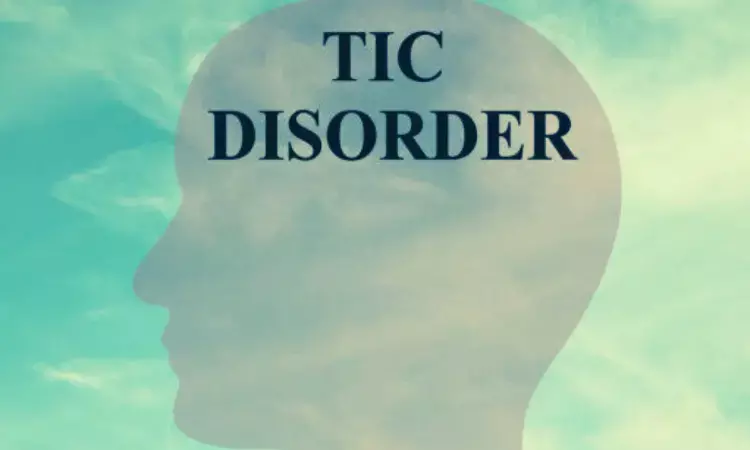- Home
- Medical news & Guidelines
- Anesthesiology
- Cardiology and CTVS
- Critical Care
- Dentistry
- Dermatology
- Diabetes and Endocrinology
- ENT
- Gastroenterology
- Medicine
- Nephrology
- Neurology
- Obstretics-Gynaecology
- Oncology
- Ophthalmology
- Orthopaedics
- Pediatrics-Neonatology
- Psychiatry
- Pulmonology
- Radiology
- Surgery
- Urology
- Laboratory Medicine
- Diet
- Nursing
- Paramedical
- Physiotherapy
- Health news
- Fact Check
- Bone Health Fact Check
- Brain Health Fact Check
- Cancer Related Fact Check
- Child Care Fact Check
- Dental and oral health fact check
- Diabetes and metabolic health fact check
- Diet and Nutrition Fact Check
- Eye and ENT Care Fact Check
- Fitness fact check
- Gut health fact check
- Heart health fact check
- Kidney health fact check
- Medical education fact check
- Men's health fact check
- Respiratory fact check
- Skin and hair care fact check
- Vaccine and Immunization fact check
- Women's health fact check
- AYUSH
- State News
- Andaman and Nicobar Islands
- Andhra Pradesh
- Arunachal Pradesh
- Assam
- Bihar
- Chandigarh
- Chattisgarh
- Dadra and Nagar Haveli
- Daman and Diu
- Delhi
- Goa
- Gujarat
- Haryana
- Himachal Pradesh
- Jammu & Kashmir
- Jharkhand
- Karnataka
- Kerala
- Ladakh
- Lakshadweep
- Madhya Pradesh
- Maharashtra
- Manipur
- Meghalaya
- Mizoram
- Nagaland
- Odisha
- Puducherry
- Punjab
- Rajasthan
- Sikkim
- Tamil Nadu
- Telangana
- Tripura
- Uttar Pradesh
- Uttrakhand
- West Bengal
- Medical Education
- Industry
Tic severity linked with social media use for teens during pandemic

MINNEAPOLIS - An increase in social media use among teens and young adults during the COVID-19 pandemic may be linked to an increase in tic severity, according to a small, preliminary study released today, February 28, 2022, that will be presented at the American Academy of Neurology's 73rd Annual Meeting being held in person in Seattle, April 2 to 7, 2022 and virtually, April 24 to 26, 2022.
Tics are sudden, uncontrollable movements and sounds often prompted by an irresistible urge to produce them. They are the defining feature of chronic tic disorders, including Tourette syndrome, which is a neurodevelopmental disorder that begins in childhood.
"Given the known increases in social media use during the pandemic, as well as the parallel increase in tic disorders that we have seen in our clinic, we investigated whether there was any correlation between social media use and tic symptoms," said study author Jessica Frey, MD, at the University of Florida in Gainesville, Fla., and a member of the American Academy of Neurology.
The study involved 20 teens and young adults ages 11-21 who were experiencing tics. Participants completed a survey which examined time spent on social media, how often they experienced tics, the severity of those tics, and overall quality of life. Quality of life refers to an individual's view of their physical and mental health.
Of the group studied, 65% of the participants reported using social media an average of six hours per day, with 90% of the participants reporting they used social media more during the pandemic than previously.
In addition, the survey showed that 85% indicated their tic frequencies worsened during the pandemic, and 50% noted that social media had negatively impacted their tics.
Researchers found a significant correlation between an increase in tic severity and reduced quality of life with increased social media use during the COVID-19 pandemic. For example, researchers asked participants to rank their tic severity using a scale of zero to six with zero being least severe and six being most severe. On average, those who reported no increase in social media use ranked their tic frequency during COVID-19 as four. Those who reported increased social media use ranked their tic frequency during COVID-19 as five. Participants also ranked their quality of life on a scale of zero being excellent and six being their worst week ever, with three meaning no change. Those who increased their social media use reported scores of 2.5, while those who reported low use of social media had scores of 1.5.
However, researchers did not find a link between social media use and how often a person had tics either at the time of the survey or since the start of the pandemic.
"Our results have begun to shed light on the impact that the COVID-19 pandemic and increased social media use may be having on teens and young adults with tic disorders," said Frey. "More research is needed to better identify the exact stressors that are leading to more severe tics so we can work to reduce stressors for those who are experiencing them."
Hina Zahid Joined Medical Dialogue in 2017 with a passion to work as a Reporter. She coordinates with various national and international journals and association and covers all the stories related to Medical guidelines, Medical Journals, rare medical surgeries as well as all the updates in the medical field. Email: editorial@medicaldialogues.in. Contact no. 011-43720751
Dr Kamal Kant Kohli-MBBS, DTCD- a chest specialist with more than 30 years of practice and a flair for writing clinical articles, Dr Kamal Kant Kohli joined Medical Dialogues as a Chief Editor of Medical News. Besides writing articles, as an editor, he proofreads and verifies all the medical content published on Medical Dialogues including those coming from journals, studies,medical conferences,guidelines etc. Email: drkohli@medicaldialogues.in. Contact no. 011-43720751


